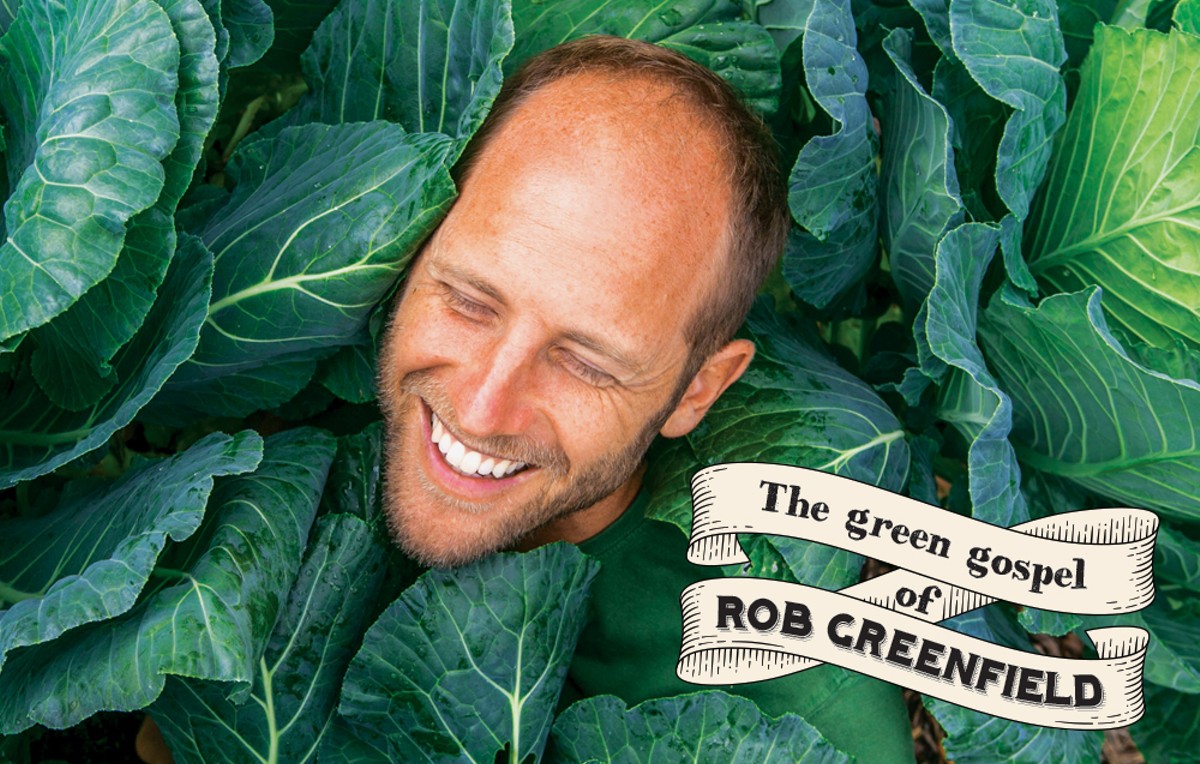Greenfield stands up and walks over to the outdoor kitchen he's set up near his home. He starts slicing up a grapefruit.
The kitchen, built from reused materials, is nestled underneath an awning. From left to right on its wooden counter, there's a metal Berkey jug that filters his drinking water, a large blue 55-gallon barrel that's rigged with a hose to intercept rainwater from the top of the awning, a sink and a home biogas stove.
Connected to the stove is a hose that slithers around to the back fence. Situated about 20 feet away from the stove, it's connected to a "bio-digester," which acts like a stomach: Filled with water and bacteria, it breaks down food matter to a gas that powers the stove via the hose.
The water he uses is recycled rainwater, and not a drop goes into a sewer system. Instead, it filters into other places and uses, such as into the barrel on the kitchen counter, which he uses to wash dishes. (The leftover "gray water" from his sink is funneled into his gardens' banana plants planted along the back fence via a separate hose.)
Across the yard are two 275-gallon totes he uses to catch water from the roof of the property owner's home – the space was provided to Greenfield on the condition that he'd help the owner live sustainably and tend to her garden.
Next to the barrels is an "outdoor shower," though it's more akin to a place where he dumps a bucket of cold rainwater on himself from behind a fence-like barrier.
The inside of his tiny house smells like wood and Nag Champa. Using 100 percent repurposed materials and with the help of volunteers, it cost him less than $1,500 to build. Only 30 pounds of trash went to the landfill; Greenfield uses other leftover materials for fire kindling.
The shelves inside are littered with homemade goods. Honey wine sits on one of the top shelves in the corner, a product of the beehive he keeps in the yard. Next to it is a jug of Jun, a kombucha-like drink made from honey and tea. There are jars of fermenting kale stems, dozens of pumpkins and sweet potatoes, and a small freezer filled with more.
The wooden chair he got from a yard sale. His desk was made from scrap wood including discarded shipping pallets, as was his bed frame with storage built underneath. The flooring was recovered from a flooded home. The shelves themselves are from Habitat for Humanity.
Greenfield's house isn't insulated. In late January, when Orlando was at its coldest, he stuffed his clothes into gaps in the ceiling. The same cracks provide a breeze during warm weather.
There's no indoor plumbing; he uses an outdoor compost toilet that's situated discreetly behind the house – luckily the fence around the yard is tall. It's open-air and doesn't smell because he sprinkles sawdust over his waste; there's not a fly in sight. The toilet system is 100 percent closed-loop, meaning the 5-gallon bucket *(see note, end of story) underneath the throne's head collects the waste, which he turns into "humanure."
As a toilet paper substitute, he uses the leaves of the blue spur flower that's growing in the backyard. The plant is from the mint family, so it smells good too.





















